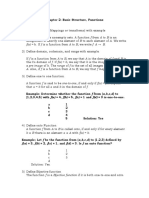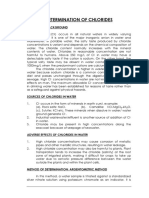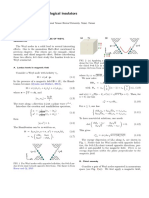0% found this document useful (0 votes)
10 views15 pagesFunctions Discrete Structures
Presentation of discrete structures, different functions examples into ,into , many
Uploaded by
sabanoor0405Copyright
© © All Rights Reserved
We take content rights seriously. If you suspect this is your content, claim it here.
Available Formats
Download as PPTX, PDF, TXT or read online on Scribd
0% found this document useful (0 votes)
10 views15 pagesFunctions Discrete Structures
Presentation of discrete structures, different functions examples into ,into , many
Uploaded by
sabanoor0405Copyright
© © All Rights Reserved
We take content rights seriously. If you suspect this is your content, claim it here.
Available Formats
Download as PPTX, PDF, TXT or read online on Scribd
/ 15
























































































